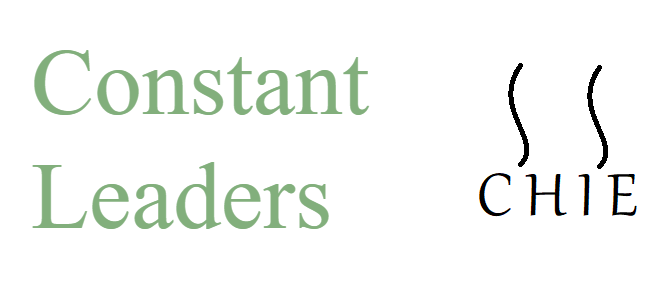
This is a topic I think we all relate to. We’ve all have had an experience when we leave a meeting and just thought to ourselves “What was the point of that?”. Unfortunately, it is quite common that meetings are ran poorly, which leaves all in attendance frustrated that their times were wasted and nothing was accomplished or gained. To make things worse, it ran longer than scheduled and still nothing productive or valuable came from it. Too often does a meeting fail to meet its objective and yet, leaders fail to recognize the problem and fail to make proper changes.
Poorly ran meetings have detrimental effects that many leaders fail to ever recognize or consider. Meetings which leaves attendees at a lost obviously is unproductive and a waste of time, not just for one person, but all the people who attends. If a meeting runs for 1 hour, and there are 8 attendees in the meeting, not accomplishing anything during the meeting have just wasted 8 hours that could be spent productive elsewhere. That’s a full day’s worth of work for one person. Unproductive meetings will have lingering effects. Members with bad meeting experience will dread future meetings. They will still attend, but with a negative attitude, unwilling to productively contribute and will expect nothing more than previous experiences. To make matters worse, they will share the negative experiences with possible newcomers, setting the stage for more negativity.
If that wasn’t bad enough, the real danger of poorly ran meetings is that the members will start questioning the capabilities of the leader, the person in charge of running the meeting. The person responsible for setting the meeting expectations, preparing for the meeting, controlling the discussion and timing of the meeting. That’s why it’s so crucial for leaders to make sure that meetings are productive and efficient. Several reasons why meetings utterly fail includes:
- Poor planning for the meeting. Meetings should have an objective and an agenda. Many times meeting invitations are sent with just a simple general meeting subject. That’s not enough preparation and not enough information for others to prepare for.
- Expectations are not set. This is the most common mistake I constantly see occur in most meetings. The leader doesn’t set proper expectations for attendees such as start time, end time, what each individual should be prepare to contribute and so on. It’s a common mistake to assume that the meeting times are what the meeting invitations indicate. It’s not. We know this because most meetings we attend starts much later than the time indicated and hardly ever ends at the exact time it’s scheduled to end.
- Not controlling the conversation. It seems like in every meeting, there’s always at least one person who appears to just like the sound of their own voice and insists on speaking on and on. If they had valuable contributions to make, it would be great, but they tend to speak off topic and would not allow anyone else a chance to speak. Someone else who does have valuable contributions to make. The leader doesn’t catch this and allows this individual to drone on, breaking any momentum and any chance the meeting had to be successful.
- Timing is key but often neglected. Meeting start time is important, but concluding the meeting timely is difficult. Knowing when it’s enough, and the meeting should end is difficult. The meeting doesn’t end when the schedule time is up. And it surely doesn’t end after everyone gets to speak their hearts desire. Every minute wasted is that minute multiply by the amount of meeting attendees. So wasted time adds up quickly.
Running a meeting well doesn’t sound so simple now, and that’s correct. It’s not simple. It takes a lot of preparation work, a lot of communication prior to the meeting, and takes great focus to controlling the meeting as conversations and information flies back and forth all over the place. While there is no one way to prepare and run a meeting, here are some suggested guidelines to use when planning and structuring a meeting.
- Is the meeting needed? You may laugh, but that’s really the very first question you must ask yourself is if the meeting is truly needed. If the information can be collected and shared through emails or simple and quick hallway or water cooler conversations, then do so. Don’t call a meeting, put in time and effort, taking away times from something else when not needed.
- Plan for the meeting before calling for the meeting. Understand exactly what the meeting needs to achieve. Start at the end and work backwards. At the conclusion of the meeting, what information must be gained? What decisions must have been made? Then call the meeting.
- Set the proper expectations for the meeting. Everything must be outlined clearly when setting the meeting. What time the meeting should start, means the meeting start time. It doesn’t mean that’s the time people start going to the meeting. Walking through the meeting room door at the meeting time is not the start of the meeting. Times are wasted when that happens as it pushes the actual meeting time back from the scheduled time. Make sure attendees are communicated what they’re expected to prepare and contribute to for the meeting.
- Controlling the meeting could be a challenge, but with practice, will prove most beneficial. Controlling the exact start and end time makes the meeting efficient. The meeting should not conclude when time expires, but should conclude when the objective’s been met. Allow everyone to give input, but control the conversation to ensure that it’s on topic and heading towards the end goal.
- Concluding the meeting with what the meeting accomplished and/or actionable items. Wrap the meeting up by stating what was achieved in the meeting and what needs to be and can done after the meeting.
Bonus: If at all possible, make sure each individual walks away with something that they personally gained from the meeting. Some new knowledges, decisions or actionable assignments. This gives them a true sense that value was achieved from the meeting.
Meetings are very tricky and can be a great source of frustrations for employees and a big reason for inefficiencies within a team. Conducted without purpose and focus will diminish the effectiveness of the leader and diminish the trust members have in the abilities of the leader. However, done well and efficiently can bring great values to the team and the organization. Before you call your next meeting, give this some thought and see how these tips and guidelines can help you improve your meeting efficiencies.
Photo by: Matthew Henry
Denny Nguyen, a veteran IT leader and experienced operational manager with 15+ years working in the software and software related service industry. Currently, Denny oversees global operations of LogiGear including IT infrastructure and services, and facility worldwide and marketing and business development for the APAC region.
Started out as a test engineer, Denny has excelled his career into project management, IT management, account management, customer relation management, and marketing and sales management. In 2004, when LogiGear began to establish its present in Vietnam with two Software Testing & Research centers in Saigon and the third center in 2009 in Danang, Denny was instrumental and the key leader who was chartered to build out the entire foundation and infrastructure for LogiGear to grow for the next twenty years.
Thank you

